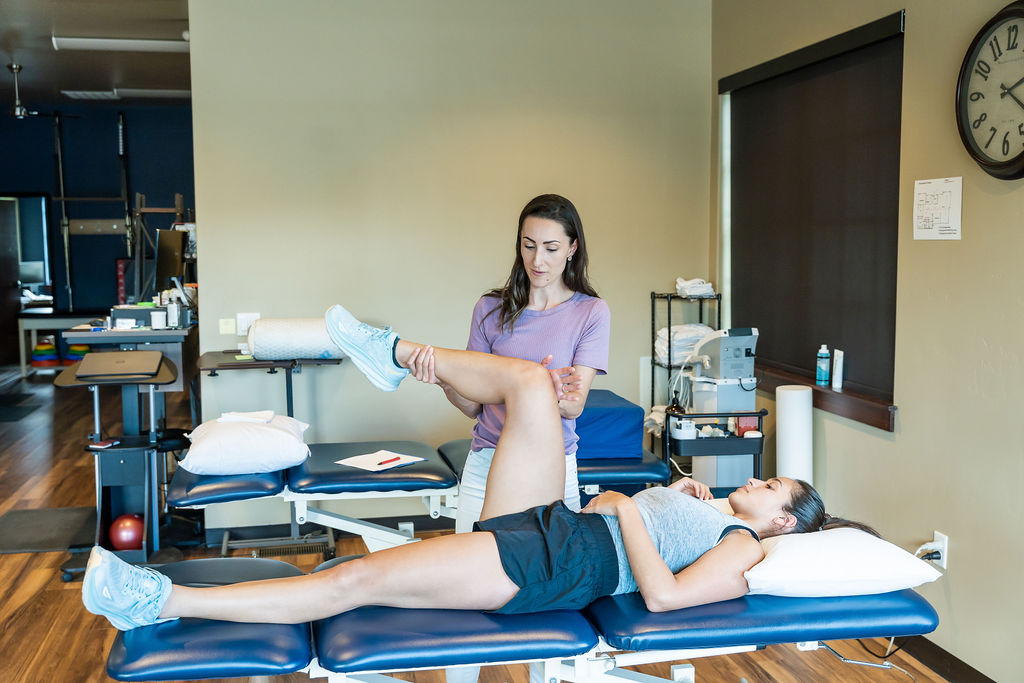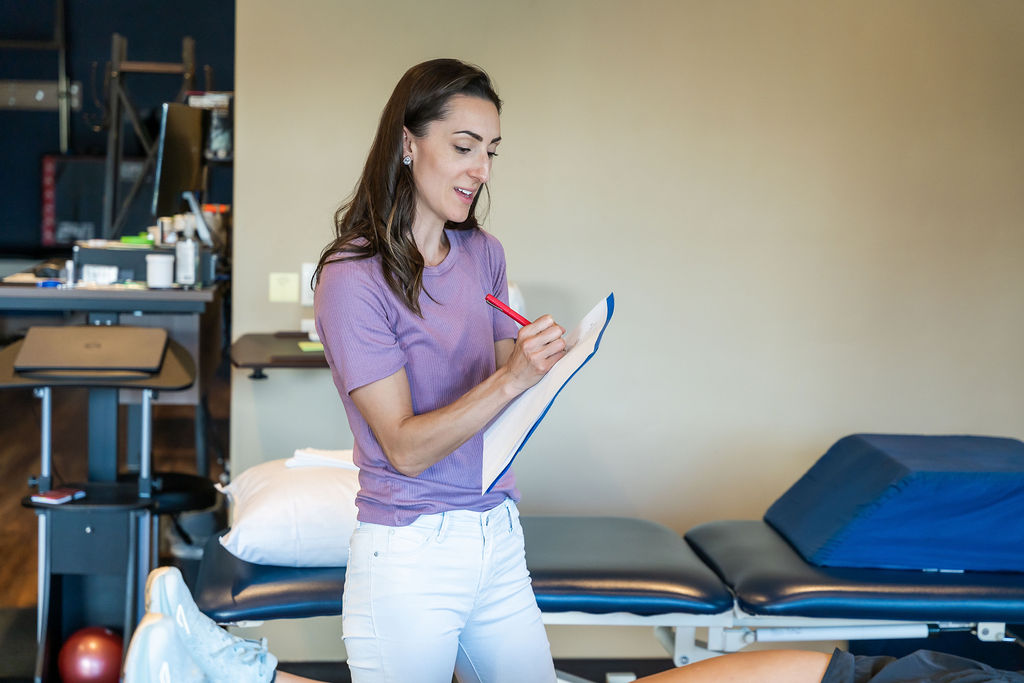The Truth About Shin Splints — A Runner’s Guide.
If you’ve ever experienced shin splints, you’re not alone. It’s one of the most common complaints among runners. Studies suggest that up to 35% of runners will experience shin pain at some point.

But here’s the thing: “shin splints” isn’t actually a diagnosis. It’s a catch-all term for pain in your lower leg or shin, and the causes can vary wildly. That’s why treatment isn’t as simple as following a one-size-fits-all plan.
I wish I could tell you, “Just do A + B + C, and you’ll never have shin splints again.” But the truth is, the right treatment depends entirely on the specific cause of your shin pain. To show why, let’s first set the stage with some facts about shin splints—and then explore two very different cases of runners with this common issue.
What Does “Shin Splints” Really Mean?
The term “shin splints” is often used to describe pain along the front or inner part of the lower leg. But it’s not a diagnosis—it’s more like a nickname for a variety of underlying conditions, such as:
- Medial Tibial Stress Syndrome (MTSS): The most common cause of shin pain, involving inflammation along the shin bone (tibia).
- Stress Fractures: Early signs of bone stress injuries, which require significant rest.
- Chronic Exertional Compartment Syndrome (CECS): Cramping, burning, or numbness caused by increased pressure in the lower leg compartments.
- Muscle or Tendon Overuse: Pain from overworked stabilizing muscles, such as the tibialis anterior.
- Nerve or Vascular Issues: Rare but possible causes, involving nerve irritation or restricted blood flow.
Why Diagnosis Matters
Because “shin splints” can describe so many different issues, proper diagnosis is essential. Knowing what’s causing your shin pain helps guide appropriate management and ensures you’re addressing the root problem.
What Doesn’t Work for Shin Splints
When shin pain strikes, many runners turn to well-meaning advice that doesn’t always work. Here’s why these common approaches often fall short:
- Tibialis Raises: While these exercises can help strengthen the muscles along the shin in some cases, they’re not effective for all types of shin pain, such as MTSS or stress fractures.

Tibialis raises can help strengthen the shin muscles but may not be suitable for all shin splint cases. - Complete Rest: Stopping all activity might temporarily relieve symptoms, but without addressing the underlying cause, the pain often comes back once you resume running.
- Foam Rolling: Foam rolling feels good, but it doesn’t address the structural or biomechanical issues behind shin pain.
- Ignoring Pain Until It Goes Away: Pushing through shin pain can make conditions like MTSS or stress fractures significantly worse.
The Danger of One Size Fits All Treatments: Two Case Studies
To understand why there’s no universal fix for shin splints, let’s look at two runners with very different experiences.
Case Study #1: Sarah, the Marathon Newbie
Background:
Sarah is training for her first marathon. She recently increased her mileage from 15 to 30 miles per week in just two weeks. She’s been running on pavement and noticed a dull ache along the inner border of her shin that worsens during her long runs.
Diagnosis:
Sarah has Medial Tibial Stress Syndrome (MTSS). This is an overuse injury where repeated impact has caused inflammation along the tibia.
Treatment Plan:
For Sarah, the focus is on reducing load and improving her body’s ability to tolerate the demands of running. Her plan includes:
- Offloading:
- Scale back her mileage to stay below her pain threshold.
- Switch to low-impact cross-training (e.g., cycling or swimming) for a few weeks.
- Strength Training:
- Begin eccentric calf raises and single-leg balance drills to build resilience in her lower legs.
- Progress to plyometric drills like pogo hops as her pain subsides.
- Running Form Adjustments:
- Increase her cadence to 175 steps per minute to reduce tibial loading.
- Focus on shortening her stride to avoid overstriding.
- Recovery Optimization:
- Prioritize sleep, hydration, and a nutrient-rich diet to support tissue repair.
Outcome:
After 6 weeks of guided rehab, Sarah gradually returns to running pain-free, with a stronger, more resilient lower body.
Case Study #2: James, the High School Sprinter
Background:
James is a competitive sprinter who has been training on the track 5 days a week. He feels sharp, localized pain on the front of his shin and notices swelling after workouts. He also feels pain when he hops on one leg.
Diagnosis:
James is showing signs of an anterior tibial stress fracture—a more serious injury that requires strict rest to avoid progression.
Treatment Plan:
For James, the focus is on bone healing and protection. His plan looks very different from Sarah’s:
- Complete Rest:
- No running or high-impact activities for at least 6–8 weeks.
- Use a walking boot if necessary to offload the tibia completely.
- Low-Impact Strength Work:
- Focus on non-weight-bearing exercises, like swimming or upper-body strength training, to maintain fitness without stressing the bone.
- Gradual Return-to-Run Program:
- After imaging confirms the fracture has healed, James begins a slow progression of running with frequent check-ins to monitor for pain.
- Running Mechanics Assessment:
- A physical therapist evaluates James’s biomechanics to identify factors that may have contributed to the stress fracture, such as overstriding or weak hips.
Outcome:
After 12 weeks of rest and progressive rehab, James returns to sprinting with no pain, a stronger stride, and better form.
Prevention Tips: How to Avoid Shin Splints
While not all cases of shin splints can be prevented, these general tips can help reduce your risk:
- Wear Proper Shoes:
- Ensure your running shoes are appropriate for your foot type and replaced regularly to maintain proper cushioning and support.
- Gradually Increase Training:
- Avoid sudden spikes in mileage or intensity. Aim to increase your weekly mileage by no more than 10% at a time.
- Warm-Up Properly:
- Incorporate dynamic warm-ups like leg swings and walking lunges to prepare your muscles for running.
- Avoid Overstriding:
- Keep your foot strike closer to your body to minimize stress on your shins.
- Cross-Train:
- Include low-impact activities like swimming or cycling to reduce cumulative stress on your lower legs.
- Strengthen and Stabilize:
- Work on building strength in your calves, hips, and core to improve overall running mechanics and resilience.
Why You Need a Running Specialist
As these cases show, shin splints isn’t a one-size-fits-all problem. What works for one runner might make another’s condition worse. That’s why seeing a running specialist is so important.
A running specialist can:
- Pinpoint the exact cause of your shin pain.
- Design a treatment plan tailored to your needs.
- Guide you through a safe and effective return-to-run program.

Takeaways: The Truth About Shin Splints
- “Shin splints” isn’t a diagnosis—it’s a catch-all term for lower leg pain that can have many causes.
- Getting an accurate diagnosis is the key to effective treatment and long-term recovery.
- A running specialist can help you recover safely and prevent shin pain from coming back.
Struggling with shin pain? At Fit & Function Therapy Solutions, we specialize in helping runners recover and build resilience for pain-free miles. Schedule an evaluation today and take the first step toward lasting relief.


